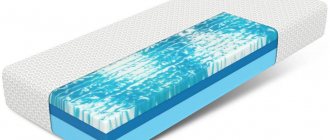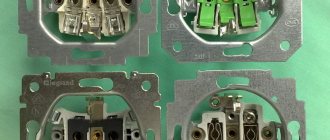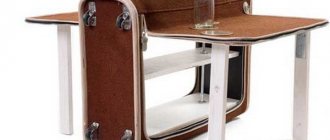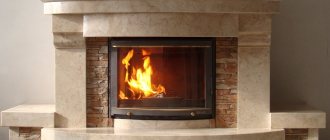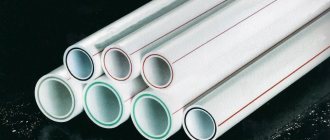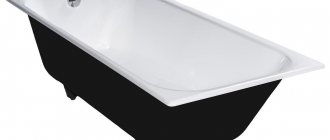Everyone knows about the need to protect lumber from weather factors, ultraviolet radiation, and wood-boring insects. The fact that the surface treatment of the base is carried out in different ways (brush, roller, spray), depending on the local specifics and consistency of the product used, is also no secret. So why is it that when painting the outside of a wooden house it is not always possible to achieve not only high quality of its design, but also the durability of the applied layer, and also preserve all the benefits of wood?
What should be taken into account, how to choose the right paint and varnish composition for painting the facade of a house, what to focus on - the article will give comprehensive explanations on all such issues.
A wooden house is a generalized concept. This is the common name for buildings not only made from solid samples (timber, logs), but also frame buildings sheathed on the outside with wood (lining, block house). All the nuances of painting discussed below apply equally to both.
Features of exterior painting of a wooden house
The need for protection from UV rays, biological pests, moisture, and so on - all this, to one degree or another, applies to any building (cladding) material. But what are the specifics of wood coloring?
Firstly, one of its main advantages is the ability to “breathe”. This explains the fact that such buildings have the most favorable, comfortable microclimate. Moreover, this is ensured mainly without human intervention, due to natural ventilation directly through the walls. That is, the wood itself, due to its porosity, partially “regulates” the humidity and temperature conditions. Therefore, the paint that will be applied to the lumber must be vapor-permeable.
Secondly, what is the beauty of wooden buildings? In their original appearance. The naturalness of the material is another factor that attracts private developers. Annual rings, “veins” - all this should be clearly visible even after painting. This means that the composition needs to be at least translucent. Otherwise, there is no point in understanding the peculiarities of this work. Anyone who does not appreciate this property of wood may not read further. In this case, any paint will do - buy it, apply it, and you're done.
Thirdly, in construction there is one of the fundamental rules regarding the external design of wooden houses. In the inside/out direction, the vapor permeability indicator should not decrease. Otherwise, moisture will condense in the thickness of the wood. The result is an increase in thermal conductivity, which is fraught with freezing of the walls, rotting and destruction of lumber.
Conclusion - any paint is not suitable for the exterior decoration of a wooden house. According to its characteristics, it must meet the above requirements.
Color harmony
Turquoise blue
For a house to be a complete architectural structure, you should think through the design of all its details and decide what color to choose for the facade of the house. First of all, you should consider a number of factors influencing this decision.
- What style is your house built in? It is better to leave a wooden house-hut in its natural color, painting it in pastel colors, honey or brown of any shade. An old house should be painted in the color that was originally intended by the architects. The castle-like home looks beautiful in stone-like light grays and red hues.
- Your building should be in harmony with the houses in the neighborhood. Therefore, it is important to pay attention to the predominant color scheme of your street. If you want to stand out, then choose a more saturated color for painting your house. If your neighbors' houses are painted in yellow shades, and you choose a pink or lilac facade color, then your building will stand out against the general background. Before you paint your house a clearly contrasting color, think carefully. In addition, it is very important to take into account the color of buildings in the garden area. The gazebo, gates and benches should be in harmony with the color of the facade.
House with a red facade
Note! The wrong choice of color can lead to the fact that the house will look too gray or even vulgar against the background of other neighboring buildings.
Facade painting
- When choosing the shade of the coloring composition, you should take into account the fact that in the sun the color looks brighter, and in the shade it looks richer, but duller. The color should be chosen taking into account how illuminated the area adjacent to the house is. The color in the catalog and on the facade may differ slightly, so take this into account when choosing.
- Color affects size. Dark shades reduce volume, while light shades visually increase volume. If your house is small, then the color of the facade must be light. A large building can be painted in any color, because in this case there is no danger of visual reduction in size.
- Antiseptic, oil and alkyd paints adhere to the surface differently. This means that the color will be more or less saturated depending on the type of paint. Wooden facades absorb paint compositions more, so they will most likely have to be painted in three layers. Matte acrylic paint is usually applied to plastered and concrete facades. One layer, of course, is not enough to obtain a uniform color, but in this case it is quite possible to get by with two layers of paint.
Specifics of choosing paints and varnishes
This question needs clarification. When they talk about painting a wooden house, they mainly mean the protective function of the applied layer. Lumber has quite a lot of “enemies”, but there are also enough means of protection against them. Moreover, this is not necessarily paint, which is something that building owners often forget about. There is also a difference in whether the wood is first processed or whether it has already been painted. What is better to buy in each case? The author leaves the choice of products by color (shade) to the discretion of the reader. Another thing is its composition and consistency.
Paint consumption calculator
Primary painting of a wooden house
Water-dispersion varnishes. Experts consider these compositions to be the best. Especially if the house is built (or decorated) from expensive wood. What are the characteristics of varnishes?
- Good vapor permeability of the resulting film.
- Almost complete inertia to weather factors.
- Large selection of shades (colorless, with tinting components).
- No smell.
- Quick drying.
- The minimum service life (until the next painting) is 5 years.
- Acceptable price.
Impregnations based on oil and wax. These are deep penetration compositions, and it is advisable to use them when painting “soft” wood. In addition to providing reliable protection for lumber, impregnations increase the hydrophobicity of the walls of a wooden house. Covering antiseptics. The compositions of this group are relatively new on the market, so there are no statistics on their use. All that remains is to rely only on the statements of the manufacturers.
- Effective protection of the tree is provided for at least 10 years.
- Increased resistance to external factors (moisture, temperature fluctuations, UV, and so on).
Types of paints for the exterior decoration of a wooden house
They are used for repeated and sometimes initial application to wood (if it is cheap). Each composition is characterized by pros and cons. When choosing, you need to focus not only on local specifics, but also on the type of wood.
Oil paints
Pros:
- Deep penetration into the structure of the material. But only on condition that the tree is not very dense.
- Service life after application is about 4 years.
- Low cost. These exterior paints are some of the cheapest available.
Minuses:
- Oil compositions fade quite quickly. Therefore, when painting exteriors, you will have to take into account the location of the wooden house.
- Long drying time for the applied layer. When working with oil paints, you need to adapt to weather conditions. Precipitation will cause streaks to appear on the facade of a wooden house, and wind will cause microparticles of dust to stick. Therefore, everything will have to be repainted.
Acrylic compounds
None of the sites on this topic mention the disadvantages of these paints. But there are many advantages.
- The tree's ability to “breathe” is preserved.
- Even damp wood can be painted with such compositions, although the feasibility of this is questionable. Acrylic paint forms a film that is elastic. Consequently, the deformation of lumber during the drying process will not cause cracks in the applied layer to appear on the facade of a wooden house.
- Acrylic compositions practically do not fade and do not require renewal for 6 to 8 years.
Paint for a wooden house
Compositions for painting wood can serve as a base (primer), a finishing coating (decorative paints, glazes), or combine these functions. The compositions must be vapor permeable so that the wood can breathe, otherwise the housing microclimate will deteriorate and the wood will rot.
Based on the main active ingredient, paints are divided into:
- Alkyd - form a glossy film, are resistant to changes in temperature and humidity, but are not resistant to UV radiation and cannot withstand mechanical loads.
- Acrylic - form a vapor-permeable layer on the surface of the wood, resistant to temperature changes and precipitation.
- Latex - features a silky shine, resistance to UV radiation, and abrasion resistance.
- Oil-based covering paints are prone to peeling, cracking and fading and quickly lose their appearance.
Coatings differ in texture:
- matte;
- glossy;
- semi-matte;
- semi-gloss.
Glazing compounds or glazes have recently gained popularity , forming a thin colored film on the surface and revealing the structure of the wood.
How to paint floors and walls?
Among the many offers, it is worth paying attention to the compositions of foreign and domestic companies that have been operating on the market for more than 10 years and have an excellent reputation :
1.Belinka, Slovenia:
- Belinka Toplasur – Alkyd, emphasizes the structure, protects for 10-15 years.
- Belinka Tophybrid – Alkyd, with enhanced protection, tinted, service life up to 15 years.
2.Tikkurila, Finland:
- Pika-Teho – Acrylate, excellent adhesion, wood protection for 5-7 years.
- Teho oljumaali – Slow-drying oil paint with a service life of 5-7 years.
- Ultra Classic – Resistant to humidity, protects against microorganisms for more than 7 years.
We recommend: Private wooden house: frame, log, timber. What are the types of wood construction?
3.Alpina, Germany:
- Alpina Die Langlebige für Holzfassaden – Vapor-permeable elastic paint that protects from the sun, fungi, and mold for 5-7 years.
- Alpina Lasur für Holzfassaden – Water-repellent properties, protects against discoloration for 7-10 years.
- Alpina Lasur für Holz – Vapor-permeable, water-repellent glaze on an alkyd base, applied over the ground.
4. Teknos, Finland:
- WOODEX EKO – Glazing natural antiseptic for revealing the structure of wood, tinted protects against fading.
- WOODEX CLASSIC – Tinted antiseptic jelly for protecting wood in atmospheric conditions, cannot be applied to old paint.
- HAITI – Alkyd antiseptic of universal action with a service life of 5-7 years.
5.Aquatex Rogneda, Russian Federation:
- Aquatex - Alkyd tinted paint with an antiseptic effect for old and new facades, can be applied to a damp base.
- Aquatex extra – Alkyd with drying oil treatment, maximum sun protection.
- Aquatex gel – Vapor-permeable composition with a dirt-repellent effect.
6.Yaroslavl paints, Russian Federation:
- Tekotex – Alkyd tinted vapor-permeable paint for bioprotection and sun protection for up to 7 years.
- Premium – Alkyd composition, can be tinted, reveals the structure.
- Bystrolak – Alkyd composition with a water-repellent effect.
We recommend reading: How to paint the outside of a timber house?
General recommendations for choosing paints
When painting a wooden house for the first time, pay special attention to this issue. The fact is that further coating of the same surface with a product on a different base is not recommended. The reason is the incompatibility of certain substances, materials, and so on. The durability of the wood, the appearance of the house, and the frequency of repairs to its facade depend on how correctly the paint is initially chosen, taking into account all the local specifics. For some reason, many people do not take this into account, focusing primarily on the color and cost of the product.
All wood paints for exterior use are discussed in detail in this article.
Looking only at the price tags of the compositions is an unpromising activity. The total costs of exterior decoration of a wooden house depend not least on the manufacturer’s recommended paint consumption per “square” of surface. Practice shows that often the use of relatively expensive products in the end (especially when it comes to large areas) does not lead to an increase in the cost of work. Sometimes you even end up saving money.
And here it is appropriate to note one more point. There is a common belief that primers are used to prepare hard materials (concrete concrete, brick, etc.) for painting. And when decorating wood externally, you can do without them, without wasting money and precious time on it. To show the fallacy of such advice, it is enough to note the fact that the primer, by filling the pores of the wood, significantly reduces paint consumption. And given the significant difference in the price of the compositions, it is hardly reasonable or advisable to neglect this stage of preparation.
Nowadays there are exterior paints on sale from a variety of manufacturers - the choice is huge. And in this regard, it is worth considering an interesting nuance. Each of them, among other things, guarantees that its composition in the exterior design of a house (wooden or otherwise) will last for at least so many years (10, 15, and so on). If we are talking about a well-known company with an impeccable reputation, you can trust it.
But what about a company (brand, brand) that has just appeared on the market of paints and varnishes? If she has been specializing in this area for at most two or three years, where does such confidence come from? After all, there are essentially no established statistics on the durability of this type of paint. And since such assurances, by definition, are not confirmed by practice, it is worth thinking carefully about whether to purchase such a composition or not. Even if its price is quite tempting.
The main stages of work on exterior painting of a wooden house
The author believes that it is enough to recall the main points:
- Thorough cleaning of surfaces. It is advisable to slightly moisten the wood beforehand. For example, using a spray bottle.
- Inspection, identification of defects. If necessary, replace rotten samples. Special techniques are used to combat blue stains and mold. This is a separate topic that requires special consideration.
- Application of primer composition. The best option is to treat the structural parts of the facade of a wooden house with a product with antiseptic properties.
- Surface painting. It is recommended to “lay” the composition on the end parts of lumber in several layers. Each one must dry thoroughly before applying the next one.
Preparation for painting - wood processing
Before applying a paint layer, the walls of the house must be prepared ; the process includes processing and subsequent protection of the wood.
Processing is carried out in several stages :
- cleaning from dust, dirt, old paint layers, oil stains;
- grinding surfaces using a grinding machine;
- cleaning with brushes or blowing a vacuum cleaner.
A primer is applied to the prepared surface, providing fire protection and bioprotection of the wood, and an adhesive primer is applied on top of it.
Important: The quality and durability of the paint layer depends on the correct preparation of the base. Layers of primer must be applied on top of the dried previous layer.
The most common wood defects
- rotting of the end of the log;
- discoloration due to fungal or mold damage;
- corroded by wood-boring beetles, termites;
- rotting in high humidity conditions;
- fading in the sun;
- charring by fire.
Protective impregnations
Before transportation, freshly cut wood at logging sites is treated with temporary protection compounds with a validity period of about six months.
If wood is not treated with a protective compound during construction, it will quickly become unusable.
To protect wood from premature aging and damage, the following drugs :
- Antiseptics are means of bioprotection and treatment against fungi, algae, bacteria and insects.
- Fire retardants to impart fire retardant properties.
- Complex action drugs.
We recommend: All available options for interior finishing of a wooden house. Wooden houses inside in the photo
To protect and color wood, they offer compositions that differ in composition, texture and purpose; they can also be natural or organic.
note
Natural paints are harmless to humans and the environment, but are not durable and require renewal after 1-2 years, while synthetic compositions guarantee protection of wood for 7-35 years.
Practical advice
When planning the exterior painting of a wooden house, you should take into account the position of the celestial body and the intensity of illumination of a particular area. The most common mistake is to apply the composition when the sun is shining brightly. The reasoning is simple - the paint layer will set faster. This does not take into account the fact that this process cannot be “customized”. It should come naturally. And the illumination over the entire area may be different. The result is uneven evaporation of the liquid component (solvent, water, drying oil) and warping of the paint, the appearance of a web of cracks in it.
Even if the product is positioned as being treated with preparations against rotting and fire, it is still worthwhile to impregnate the wood with a fire retardant and antiseptic once again. Unfortunately, many manufacturers save on literally everything, including the compounds in this category. At the very least, there will be complete confidence that a wooden house will last for decades without major repairs.
Owners of purchased wooden houses are faced with the same problem - what exactly was used to paint the façade by the previous owners. How to determine the type of paint in order to choose an identical one in composition if there is no one to ask?
- Oily. After touching the wood, a characteristic whitish mark remains on the palm (finger). When you try to separate the paint from the base, it begins to crumble.
- Acrylic. It is easy to determine by touch. Since the hardened layer remains elastic, it is enough to press a little on the wood, and it will become clear that it was painted with an acrylate-based composition.
- Antiseptics. Their peculiarity is gradual abrasion. Consequently, after some time, characteristic “bald spots” appear on the walls of a wooden house. You just need to carefully examine the façade and they will be revealed.
In principle, if you approach the issue of painting a wooden house correctly, such work does not present any particular difficulties. The main points in the article are presented in detail, and the rest is up to you, the reader.



